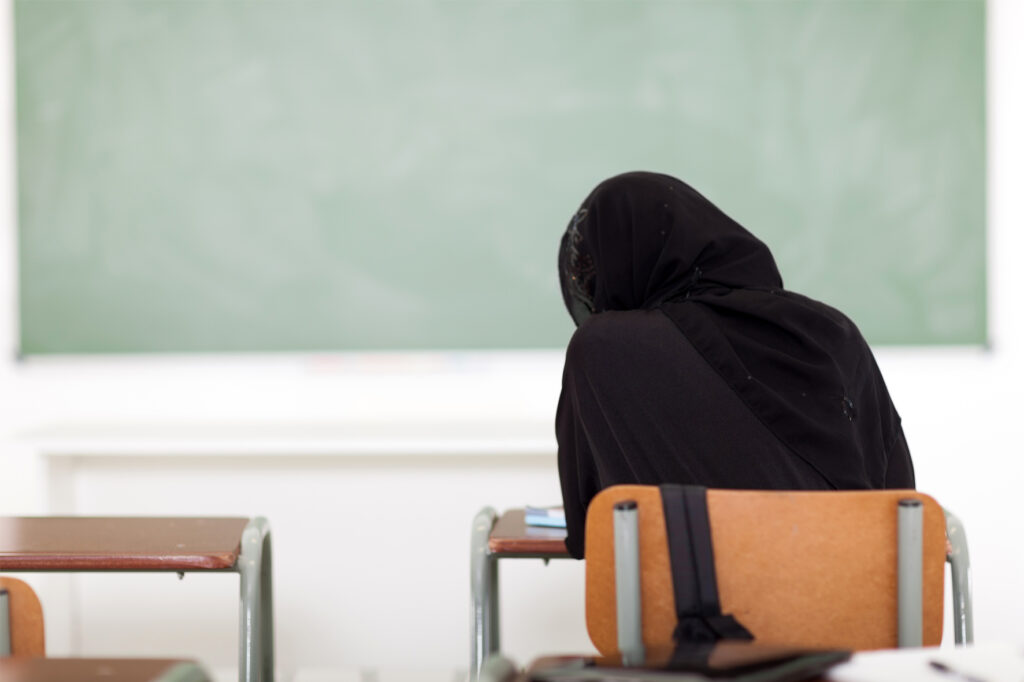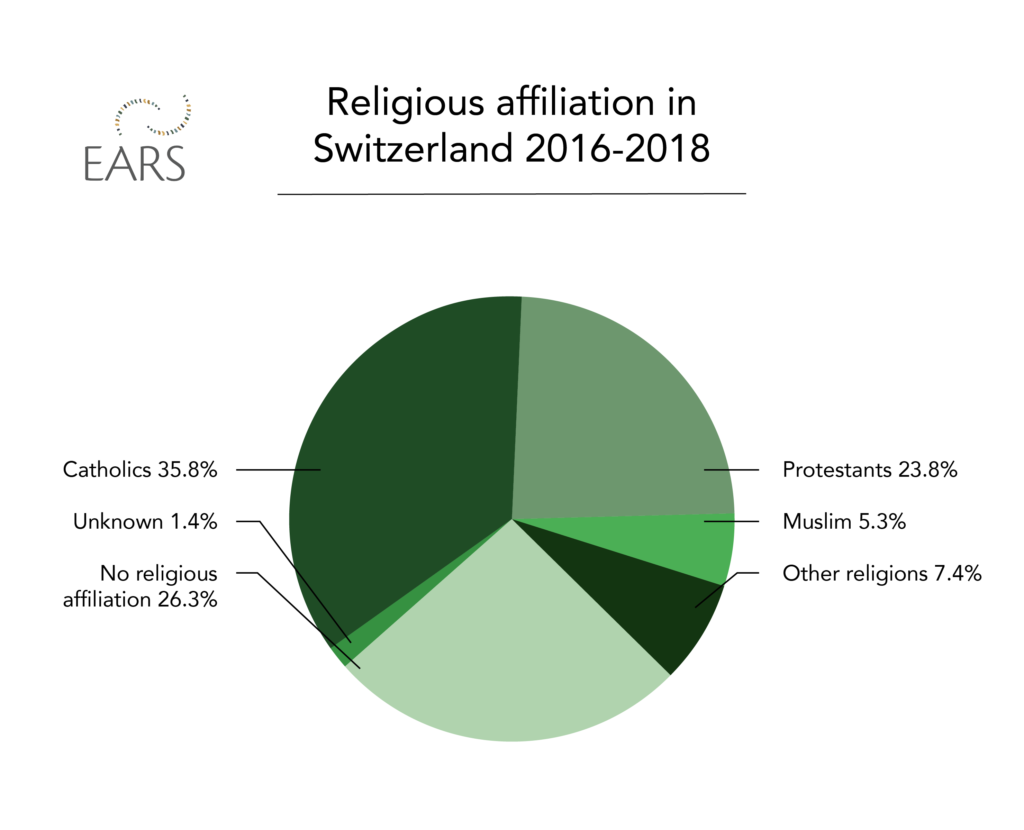Teaching Islam in state schools: Part 1
Teaching Islam in state schools: Part 1
Islam as a globalising force sets new challenges on the current educational systems in Western Europe, since most Muslims prefer for their children to receive at least some religious education. Whether and how Islamic teachings are regulated in state schools varies from one country to another.
This article is part of our series on the role of religion in education across Europe.
Religious education has always been a debated matter in Western Europe. The growing presence of Islam in Europe has posed new questions on the endurance of the religious educational system, both from a religious and a general point of view. Specifically, European countries vary in their attitude towards Islamic Religious Education (IRE). The regulation of IRE mainly follows the current educational system and existing state-church relations, which emerged over the centuries in the context of the Christian churches.[1] Various forms of IRE have thus developed over time across Western Europe.[2]
A brief history of IRE in Western Europe
In the Islamic world, learning and teaching are often based on religious beliefs.[3] Numerous public and private educational institutions are open to those of the general public who follow Islam. In the 1960s, Muslim immigrants came to Western Europe in search of work and, over the decades, became influential minorities.[4] The first Islamic teachings were mainly given in mosques by religious autodidacts; people who taught themselves the religious principle of Islam. During the steady increase of the Muslim community, trained imams (leaders of prayers in a mosque) and religious instructors were recruited from Islamic countries to give Islamic teachings.[5]
Different approaches in contemporary Western Europe
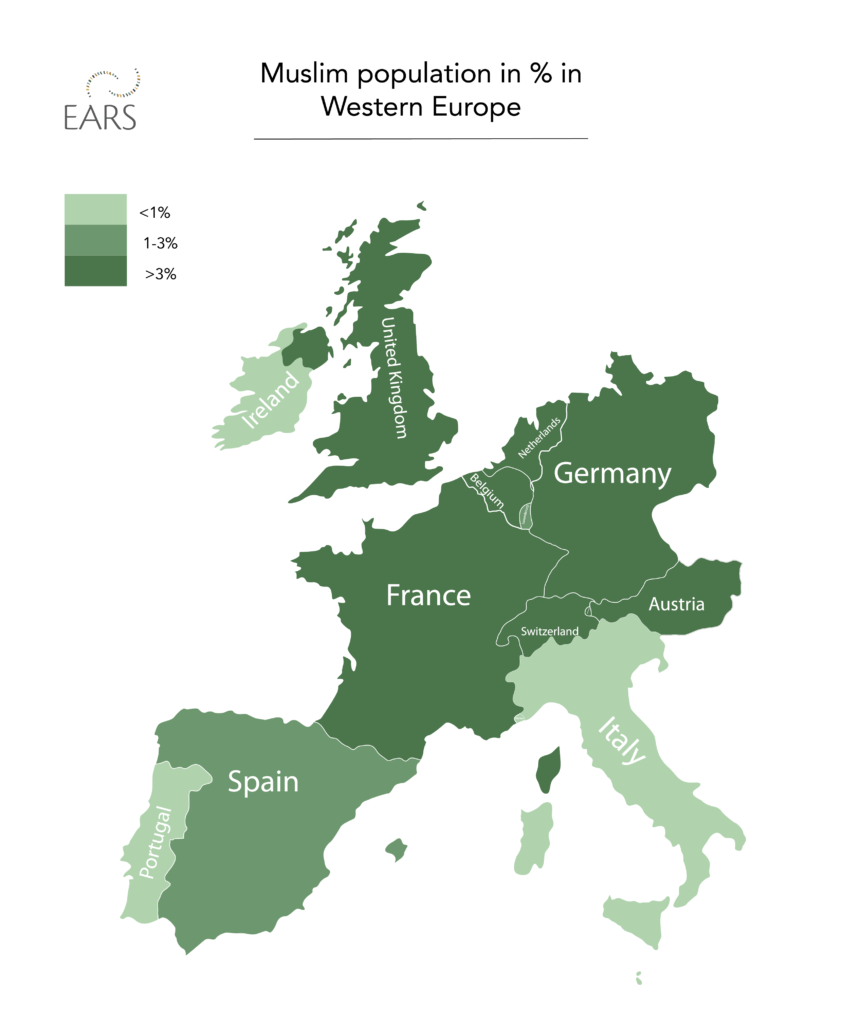
According to official estimates, about 50 million Muslims live in Europe.[6] European nations’ approach to the integration of Muslim communities also applies to their attitude towards IRE.[7] Some countries allow the official recognition of Muslim communities, hence a confessional IRE can be given in state schools, while some offer the all-embracing religious education that teaches about Islam as well as other religions. Three main approaches to IRE can be discerned.[8] In the first of three articles, we will discuss the first model which may be termed as no IRE in state schools.
Model I: No IRE in state schools
France: The absence of (I)RE in the state of laïcité
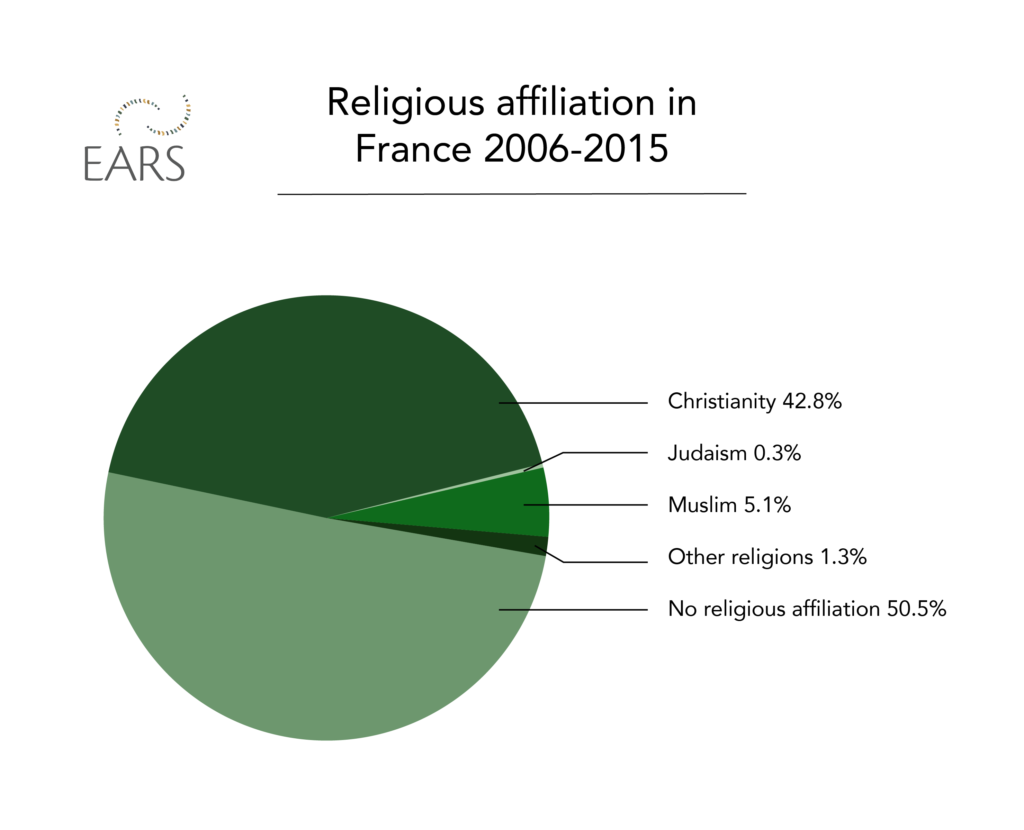
Comprising approximately 8% of the total population as of mid-2016, France houses 5.4 million[9] Muslims and has the largest percentage of Muslims in Western Europe.[10] There is no religious education of any kind in state primary schools, whereas in secondary schools, religion can be taught by chaplains (but not during school hours).[11] Given that France upholds laïcité , Islam is almost only taught in private institutions.[12] [13]
The vast majority of France’s 9,000-plus private schools are under contract with the state[14] and thus publicly-funded, whereas approximately 1,500 private schools are independently funded. Among them, 70% are non-confessional, 17% Catholic, and 5% Muslim.[15] The majority of private Islamic schools that have not met the requirements to qualify for public funding are therefore independently funded.[16] As a result, the increasing, unmet demand for affordable, quality Islamic education in France has fostered a new trend: Muslim students make up nearly 10% of France’s Catholic school student body. In some parts of France, these children constitute 70% of all children in such schools.[17] Many parents say Muslims are treated more favourably there compared to state schools.[18]
Switzerland: Islamic instruction mainly in mosques
About 391,700 Muslims live in Switzerland and represent 5.5% of the total Swiss population.[19] The French model can also be found in some Francophone cantons of Switzerland,[20] where no religious education is provided at school. Instead, there are subjects or subject combinations such as ‘philosophy’ and ‘values’, or ‘ethics and religious cultures’.[21] Religious communities can give confessional RE in private schools. However, there are no Muslim schools in these cantons.[22]
Even among many German-speaking cantons,[23] in which the Muslim community has the right to provide IRE, IRE has only been introduced in very few municipalities.[24] Thus, Islamic instruction is mainly offered in mosques.[25] Nevertheless, overall, religious education in Switzerland is transforming from a denominational lesson to a non-denominational one that focuses on ethics and world religions.[26]
Andorra: No IRE vs. mandatory Catholic RE
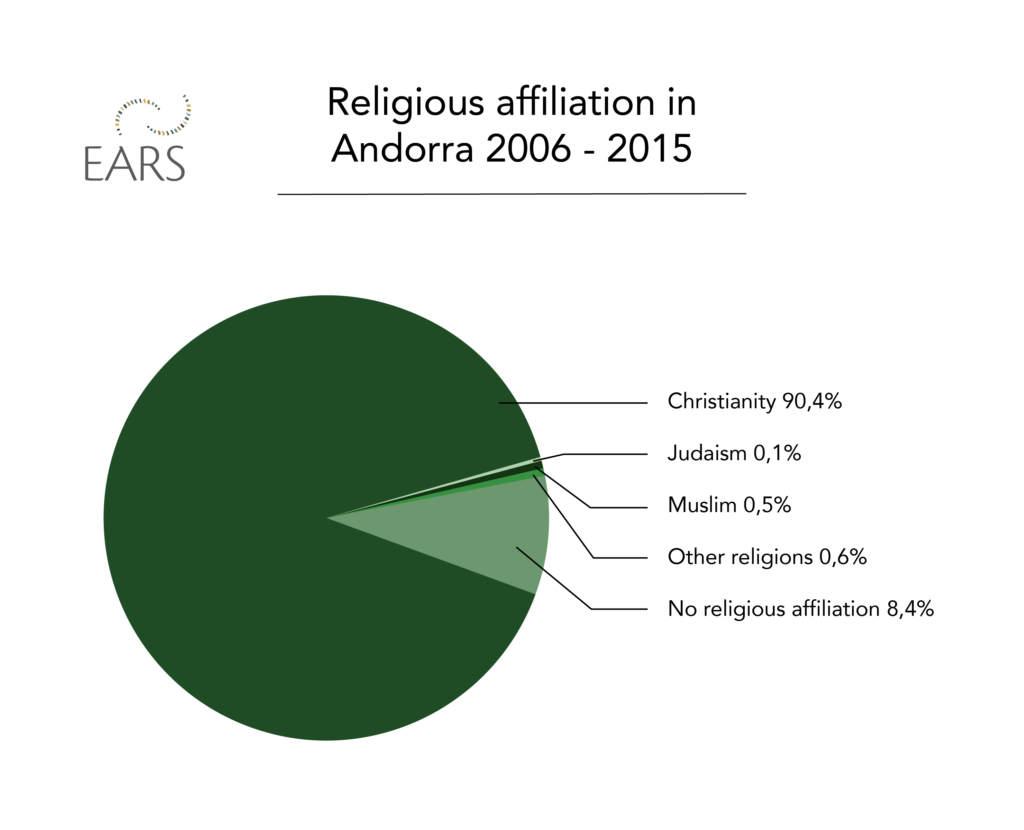
With 87.4% of the population belonging to the Catholic Church,[27] Article 19 of the law regulating the Andorran education system specifically states that Catholic RE must be offered in public schools. Students, or their parents, do have the possibility to opt out of these classes.[28] In accordance with the constitution, the government offers the Catholic Church privileges not available to other religious groups. Muslims represent 0.5% of the total population[29] and there is neither IRE nor mosques in the country.[30]
Italy: Muslim pupils attending Catholic RE
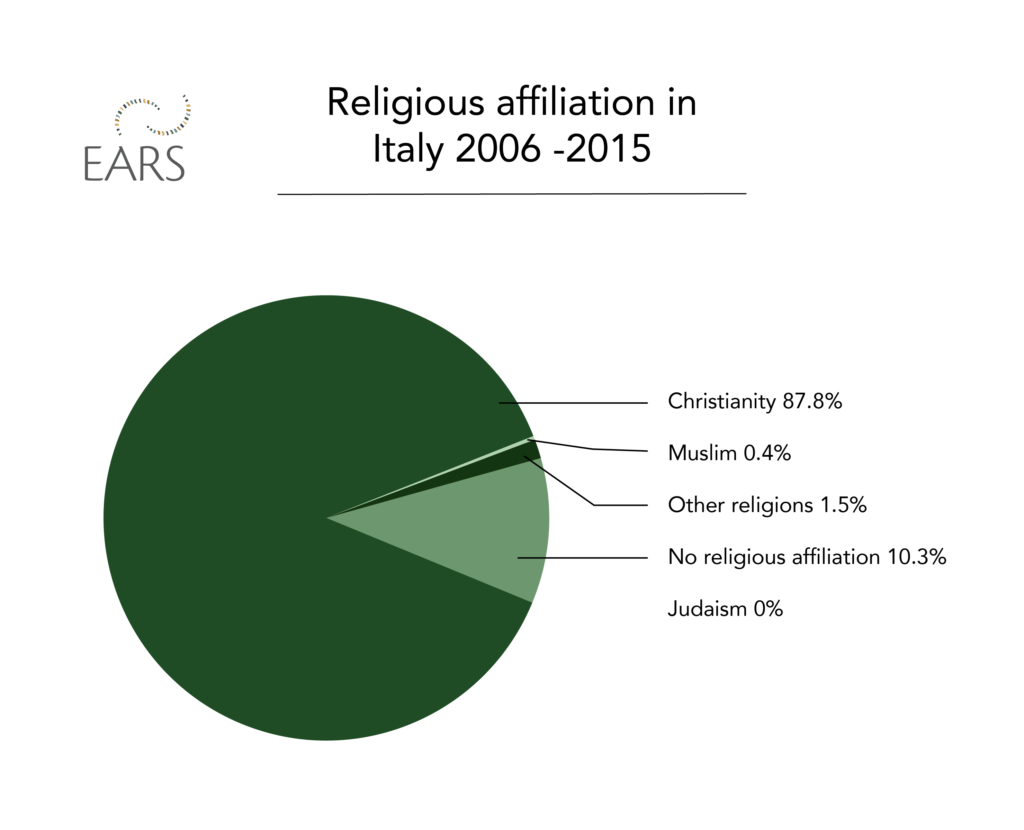
Islam is the second-largest religion in Italy after Catholicism. The Muslim communities are mainly composed of registered residents who do not have Italian citizenship.[31] They are ethnically diverse and divided into many different associations.[32] According to a survey conducted by Pew Research Center,[33] the number of Muslims in Italy is around 2.87 million, equal to 4.8% of the total population.[34]
According to the Italian constitution, a religious community that has signed an agreement with the state is allowed to organise its religious teaching in public schools. Despite the increasing presence of Muslim pupils in Italian public schools, no agreement between the state and the Muslim communities has been reached. Thus, they do not have the right to provide religious teaching in public schools.[35] Having no IRE at schools, Muslim families often permit their children to attend Catholic RE which includes knowledge about world religions.[36]
Muslims’ ‘solution’ to the lack of IRE
Looking at these examples, one recognises the diversity within countries that follow this model. While neither IRE nor RE is provided in state schools in countries that adopt laïcité (France, Swiss French-speaking cantons), Muslim communities are struggling to fit into the existing framework of RE in countries with a predominantly Catholic population (Italy, Andorra). As a compromise between the absence of IRE and the demand for religious education,[37] the increasing attendance of Muslim pupils at Christian schools shows that the current religious educational system has not met the educational demands of Muslim communities yet.[38]
In the next article in this series, we will discuss the second model, which may be termed as Religion for all. Stay tuned!
Want to learn more about similar topics? Go to the EARS Dashboard and receive weekly updates.
[1] Albrecht Fuess (2007) Islamic Religious Education in Western Europe: Models of Integration and the German Approach, Journal of Muslim Minority Affairs, 27:2, 215-239, DOI: 10.1080/13602000701536166
[2] Albrecht Fuess (2007) Islamic Religious Education in Western Europe: Models of Integration and the German Approach, Journal of Muslim Minority Affairs, 27:2, 215-239, DOI: 10.1080/13602000701536166
[3] Education in Europe and Muslim Demands for Competitive and Moral Education
[5] Albrecht Fuess (2007) Islamic Religious Education in Western Europe: Models of Integration and the German Approach, Journal of Muslim Minority Affairs, 27:2, 215-239, DOI: 10.1080/13602000701536166
[6] According to the Pew Research Center, the Muslim population in Europe (defined here as the 28 countries presently in the European Union, plus Norway and Switzerland) as of mid-2016, estimated at 25.8 million (4.9% of the overall population) – up from 19.5 million (3.8%) in 2010. Europe’s Growing Muslim Population; Prognose zur Anzahl der Muslime in Europa und weltweit bis 2050.
[7] Jackson, Robert & Miedema, Siebren & Weisse, Wolfram & Willaime, Jean-Paul. (2007). Religion and Education in Europe: Developments, Contexts and Debates. P.70.
[8] Albrecht Fuess (2007) Islamic Religious Education in Western Europe: Models of Integration and the German Approach, Journal of Muslim Minority Affairs, 27:2, 215-239, DOI: 10.1080/13602000701536166
[9] While many countries do collect data on Muslims and other religious groups in a census, in other countries, such as France, governments restrict the collection of religion data on the census and other
government surveys.
[10] The state authorities and institutions in France are not allowed to record the religious affiliation of the population. Hence, the respective data that has been used are collected by reputable, non-governmental sources. 5 facts about the Muslim population in Europe; Frankreich – Religionen bis 2050
[11] (PDF) ISLAMIC EDUCATION IN EUROPE – A COMPREHENSIVE ANALYSIS
[12] For more info on laïcité: The challenges and consequences of covering laïcité
[13] Islamic Religious Education in Western Europe: Models of Integration and the German Approach; Religion(en) und Schule in Frankreich
[14] As a result of an agreement between the Catholic Church and the state at the beginning of the 20th century. Das Ideal einer neutralen Öffentlichkeit: Die Trennung zwischen Staat und Religion in Frankreich | bpb
[15] Statistiques; Muslim schools are allies in France’s fight against radicalization – not the cause
[16] Albrecht Fuess (2007) Islamic Religious Education in Western Europe: Models of Integration and the German Approach, Journal of Muslim Minority Affairs, 27:2, 215-239, DOI: 10.1080/13602000701536166
[17] Education in Europe and Muslim Demands for Competitive and Moral Education
[18] (PDF) ISLAMIC EDUCATION IN EUROPE – A COMPREHENSIVE ANALYSIS
[20] French is the sole official language in four Swiss cantons: Geneva, Vaud, Neuchâtel, and Jura. Additionally, French and German have co-official status in three cantons: Fribourg, Valais, and Bern.
[21] Lessons in Ethics deals with ethics and questions of meaning. Von Kanton zu Kanton verschieden: Neue Ansätze im Religionsunterricht der Schweiz
[22] Von Kanton zu Kanton verschieden: Neue Ansätze im Religionsunterricht der Schweiz
[23] In 17 of the 26 cantons, Swiss High German is the sole official language. In three other cantons(Bern, Fribourg , Valais), Swiss High German is one of the official languages.Vielsprachige Schweiz
[24] The German-speaking Canton of Lucerne introduced Islamic religious education in primary school in the municipalities of Ebikon and Kriens in 2002 and the Canton of Thurgau in the municipality of Kreuzlingen in 2014..Islamischer Religionsunterricht in der Schule; Islamunterricht an Thurgauer Schulen bleibt möglich | St.Galler Tagblatt
[25] Islamunterricht in der Schweiz – Seltener Einblick: zu Besuch im islamischen Religionsunterricht; Islamic Religious Education in Western Europe: Models of Integration and the German Approach
[26] Von Kanton zu Kanton verschieden: Neue Ansätze im Religionsunterricht der Schweiz
[27] The local government does not provide statistics on the size of religious groups, and there is no census data on religious group membership.
[28] Religion and the Secular State in Andorra
[29] Religionszugehörigkeit | bpb
[30] Andorra – United States Department of State
[31] It is worth mentioning that there are strict conditions to acquire Italian citizenship, while obtaining work and residency permits is easier. As a result, many immigrants who have lived for years and their children born in Italy cannot easily obtain Italian citizenship.
[32] Countries of origin are Morocco and other North-African countries, but also Albania, Pakistan, Bangladesh, Syria, and many others.
[33] There is no official census of religious communities in Italy.
[34] 5 facts about the Muslim population in Europe;Italien – Einwohner bis 2024; L’Islam sunnita: un’introduzione
[35] Religious education in Italian public schools: what room for Islam? – Statoechiese.it – Stato e Chiese – Rivista telematica
[36] Religious education in Italian public schools: what room for Islam? – Statoechiese.it – Stato e Chiese – Rivista telematica
[37] Religious education which is written in lowercase, refers to general religious education, not limited to the school subject Religious Education (RE).
[38] Education in Europe and Muslim Demands for Competitive and Moral Education
